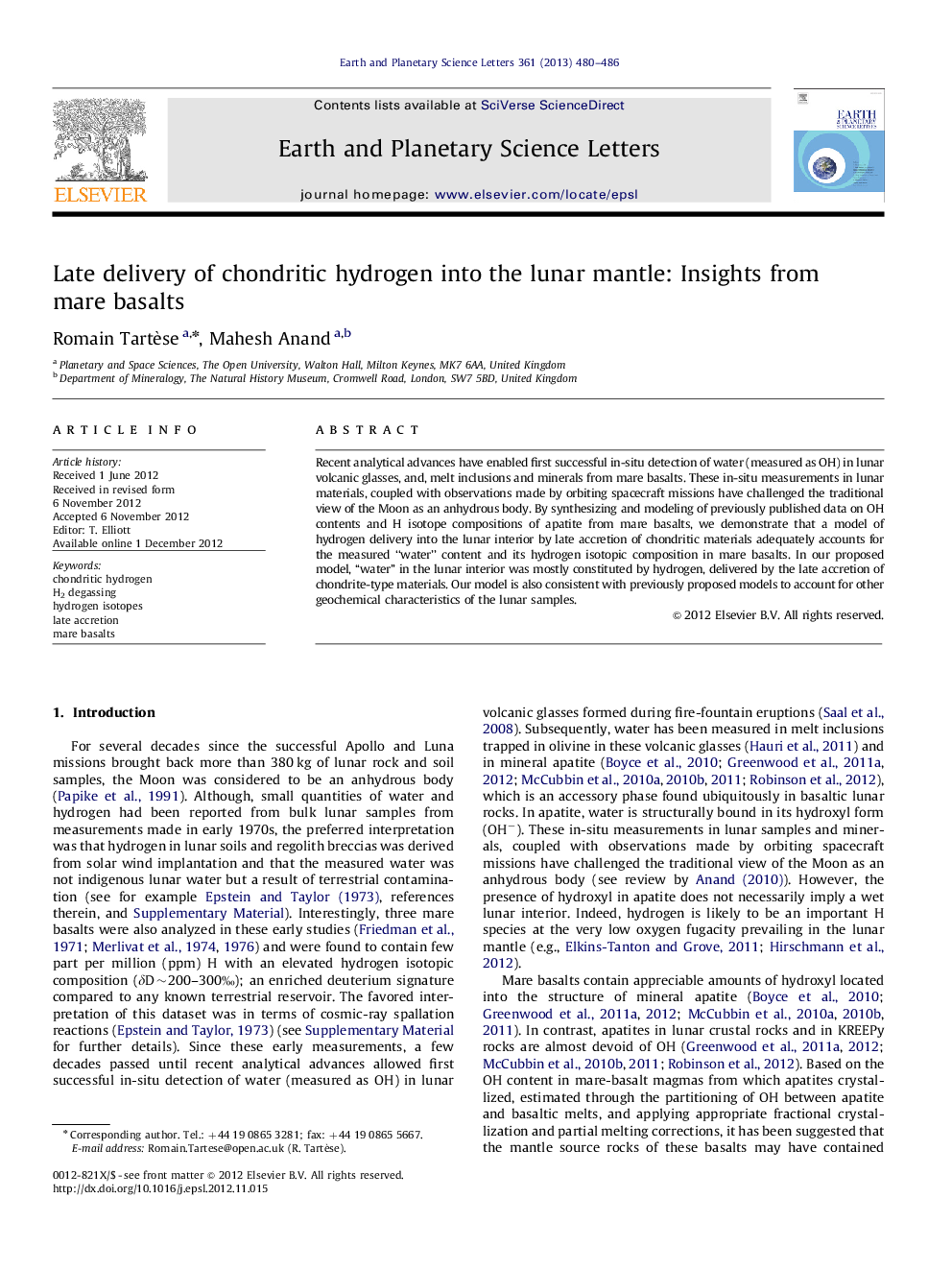| Article ID | Journal | Published Year | Pages | File Type |
|---|---|---|---|---|
| 4677199 | Earth and Planetary Science Letters | 2013 | 7 Pages |
Recent analytical advances have enabled first successful in-situ detection of water (measured as OH) in lunar volcanic glasses, and, melt inclusions and minerals from mare basalts. These in-situ measurements in lunar materials, coupled with observations made by orbiting spacecraft missions have challenged the traditional view of the Moon as an anhydrous body. By synthesizing and modeling of previously published data on OH contents and H isotope compositions of apatite from mare basalts, we demonstrate that a model of hydrogen delivery into the lunar interior by late accretion of chondritic materials adequately accounts for the measured “water” content and its hydrogen isotopic composition in mare basalts. In our proposed model, “water” in the lunar interior was mostly constituted by hydrogen, delivered by the late accretion of chondrite-type materials. Our model is also consistent with previously proposed models to account for other geochemical characteristics of the lunar samples.
► OH contents in apatite in mare basalts suggest late-addition of hydrogen in the lunar mantle. ► Chondrites are the most likely source of the late-accreted hydrogen to the Moon. ► Hydrogen degassing from mare magmas explains the high D/H ratio of lunar apatites.
